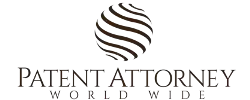Non provisional – complete patent application in US
A non-provisional utility patent application to be filed at USPTO must include
- a specification,
- a description,
- at least one claim;
- drawings (if required),
- an oath or declaration; and
- the prescribed filing, search, and examination fees.
An oath or declaration is a formal statement that you believe that you are the original inventor of the claimed invention in the application and the statement that the application was made by you (the inventor).
Fees
| Large entity | Small entity | Micro entity |
| $1,820 | $664 | $364 |
fees for filing, searching, examining, issuing, appealing, and maintaining patent applications and patents are reduced by 50 percent for any small entity that qualifies for reduced fees under 37 CFR § 1.27(a),
and are reduced by 75 percent for any micro entity that files a certification that the requirements under 37 CFR § 1.29(a) or (d) are met.
If fees for filing, search, or examination are paid on a date later than the patent application filing date would require a late surcharge of $160, $80 for a small entity, and $40 for the micro entity.
Hence, your best and the economic option would be to file a non-provisional utility patent application electronically via EFS-Web along with pay filing, search, and examination fees at the time of filing itself.
If a postcard is submitted with a patent application, the detailed listing should include the following items:
- title and number of pages of each USPTO form
- number of pages of specification (excluding claims)
- number of claims and the number of claim pages
- number of figures of drawing and the number of sheets of drawings
- whether an oath or declaration statement is included and the number of pages
- type and number of other documents that are included and the number of pages of each document
- amount of payment and the method of payment (i.e., check, credit card, money order, or USPTO deposit account)
For both non-provisional and provisional utility patent applications, the application includes a written “specification” that is typically divided into the following sections:
- Title of the Invention.
- Cross-Reference to Related Applications, which specifically identifies any and all prior U.S. patent applications, both provisional and non-provisional, from which the applicant claims may benefit.
- Background of the Invention, which describes the “technical field” of the invention and provides information such as the known technology, problem solved by the invention, and, perhaps, the failures of the prior art to either recognize or adequately address such problems.
- Summary of the Invention, which provides a brief summing up or a general statement of the invention, and often points out the invention’s advantages and how it solves a problem or design challenge.
- Brief Description of the Drawings, which describes the subject matter illustrated in one or more accompanying figures.
- Detailed Description of the Invention, which describes the best mode of practicing the invention and provides a sufficiently detailed disclosure to enable those skilled in the art to duplicate and practice the invention, with cross-references to any drawings provided.
- Claims, which seek to describe the extent of the invention to be protected. A non-provisional patent application must include at least one claim; by statute, no claims need to be presented in a provisional patent application. This is the critical part of the patent application and defines the legal scope of protection being sought. These claims are not unlike a legal description of real estate.
- Abstract of the Disclosure, which summarizes the disclosed embodiments of the invention to facilitate searching for relevant prior art.
- Drawings, which illustrate examples described in the detailed description section.
- Oath or Declaration, in which each identified inventor states that he or she is an inventor of the subject matter recited in the accompanying claims and that they are making or authorizing the application for patent.
